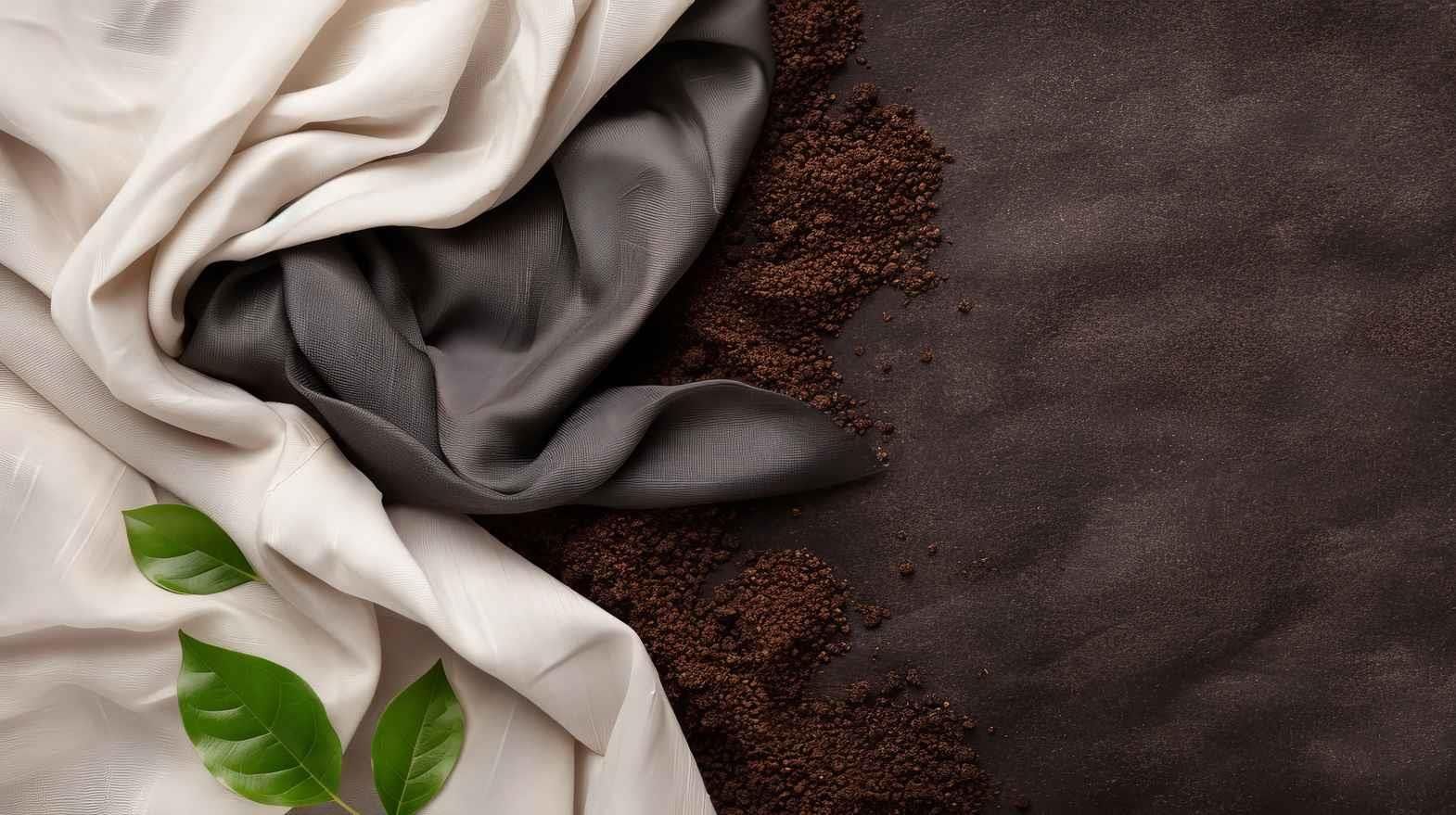Biotech applications are highly popular in the textile industry. From pre-treatment to finishing, the use of enzymes to replace conventional processes has been common for ages. Enzymatic processes have enabled energy-saving and eco-friendly textile processing strategies. Additionally, biotech applications, in combination with other technologies like artificial intelligence (AI) and nanotechnology, are becoming increasingly evident in the fashion industry. Biotech research holds promising solutions for the textile sector, with bioengineered fibres seen as potential substitutes for synthetic fibres. Pigments derived from algae are forecasted as future alternatives to synthetic dyes.
Enzymatic Processing
In the past few decades, biotechnology has revolutionised the textile industry, particularly in the area of textile wet processes, which have followed more sustainable pathways with the advent of biotechnology. From fabric pretreatment to its colouration and finishing, enzymes are readily available to replace conventional textile wet processes. The application of enzymes in the textile industry has significantly contributed to the sector’s overall sustainability. Enzymes act as biocatalysts, enabling low-temperature processes, resulting in net energy savings. Their specific mode of action and biodegradable nature further ensure minimal resource waste and lower effluent loads. Two classes of enzymes play major roles in textile processing: hydrolases and oxidoreductases. Widely used enzymes, such as amylases, cellulases, proteases, pectinases, lipases, and esterases, belong to the hydrolase class, while laccases and catalases, used in pretreatment and finishing, belong to the oxidoreductase class.
Biotechnology in Textile Waste Management
Textile waste can exist in the form of liquid effluent, solid sludge, or gaseous emissions. In addition to lowering processing temperatures and energy consumption, enzymes produce negligible effluent loads. The use of white biotechnology in the textile industry is gaining momentum to achieve sustainable development goals (SDGs).
Producing biofuels from textile waste is a promising approach to addressing the dual challenges of waste management and sustainable energy production. Converting fibrous waste into bioethanol, biogas, or biodiesel not only reduces the environmental impact of textile waste disposal but also provides an alternative source of renewable energy. Ongoing research and technological advancements are likely to improve the efficiency and scalability of this process, making it a viable solution for the future. The bioconversion of textile waste into biofuels and valorised products is gaining attention. In the past, chemical treatments were used to convert cellulosic waste into biofuels. Recently, fermentation techniques have been employed to convert cellulosic waste into glucose and bioethanol.
Enzymatic recovery of high-purity glucose and polyester from waste textile blends has been recently reported. Certain bacteria and fungi have been found to be effective in breaking down synthetic dyes used in textiles. For instance, Pseudomonas and Aspergillus species can decolourise and degrade azo dyes. Microalgae have shown potential in adsorbing and degrading textile dyes from wastewater. A more environmentally friendly approach to treating coloured and toxic dyeing effluents is ‘bioremediation’. Algae-based systems can treat dyeing effluents before they are discharged into the environment.
Microbial nanocomposites also assist in dye removal from textile effluents. Secondary effluent treatment of wastewater emerging after textile production relies on microbes. These bacterial isolates work on biosorption and biodegradation principles. Several bacterial strains, including Neisseria sp., Vibrio sp., Bacillus sp., Aeromonas sp., Acinetobacter baumannii JC359, and Bacillus pseudomycoides, are effective in biosorbing target dyes from reactive and acid dye classes.
Bio-engineered Materials
Recent research has focused on developing bioengineered textile materials. Fibres derived from recombinant proteins are gaining popularity due to their exceptional mechanical properties and excellent biocompatibility. Material scientists are working on biosynthetic spider silk by bioengineering silk genomes to replace synthetic fibres. The combined use of AI and genome sequencing of proteins is enabling start-ups to create genetically engineered spider silk without harming any living creatures.
Bacterial cellulose is another innovative material developed using biotechnology. Its high water-holding capacity makes it ideal for applications in sportswear, medical textiles, and breathable fabrics where moisture management and super absorbency are critical. The biocompatibility and moisture management properties of bacterial cellulose also make it a suitable material for wound dressings and other medical textiles. Furthermore, bacterial cellulose can be functionalised with antimicrobial agents to create protective textiles that resist or inhibit bacterial growth, which is particularly beneficial for the healthcare and hospitality industries. Biotechnology also offers a promising solution for the fashion industry in the form of artificial leather. Additionally, 3D-printed fabrics derived from mushroom roots have been reported.
Bio-colouration
Due to the environmental impact of textile dyeing mills, pigments derived from microalgae are gaining research interest as an alternative to synthetic textile dyes. Unlike natural dyes derived from plants and other sources, microalgae-based pigments offer higher efficiency and are not subject to seasonal availability. Bacterial pigments also have the potential to impart antioxidative, antiparasitic, UV-protective, and anticancer properties to textile substrates. Current research has mainly focused on limited shades, including pink, red, violet, and blue. Prodigiosin, melanin, and violacein are the most commonly reported bio-pigments for textile dyeing. Research has shown that different bacterial strains can produce the same pigment, such as prodigiosin, though the compound’s ability to dye different textile fibre types varies. While the synthesis and isolation of bacterial pigments for textile applications have been successfully studied, further research on dye-fibre interactions is necessary to fully understand the mechanism of bacterial dyes for textile colouration.
Sustainability Aspect
The textile industry has embraced biotechnology to enhance sustainability throughout its value chain. Enzymatic treatments have replaced conventional processes, offering reduced energy consumption and lower effluent loads. Enzymes such as amylases, cellulases, and pectinases are widely used in textile processing as substitutes for traditional methods. Further research is being conducted on enzyme immobilisation techniques, which could lead to the efficient reuse of enzymes. Advances in this area hold potential for even greater sustainability in textile processing.
Biotechnology is also being used to address textile waste management. Converting textile waste into biofuels tackles both waste management and energy production challenges. Microbial bioremediation utilises bacteria and microalgae to break down synthetic dyes, reducing the environmental impact of dyeing processes. Advances in bioengineered materials, such as bacterial cellulose and biosynthetic spider silk, offer sustainable alternatives to traditional synthetic fibres.
Conclusion
Although biocatalysts are relatively expensive compared to conventional harsh chemicals, they are gaining acceptance due to their reduced environmental impact and lower energy requirements. The textile industry is facing increasing pressure to minimise its water and carbon footprint throughout the entire value chain. While biotechnology has been found to be effective based on cost-performance analysis, scaling up productivity remains a challenge. Continued research is essential to successfully integrate biotechnology and create a more sustainable future for the textile industry.









Comments